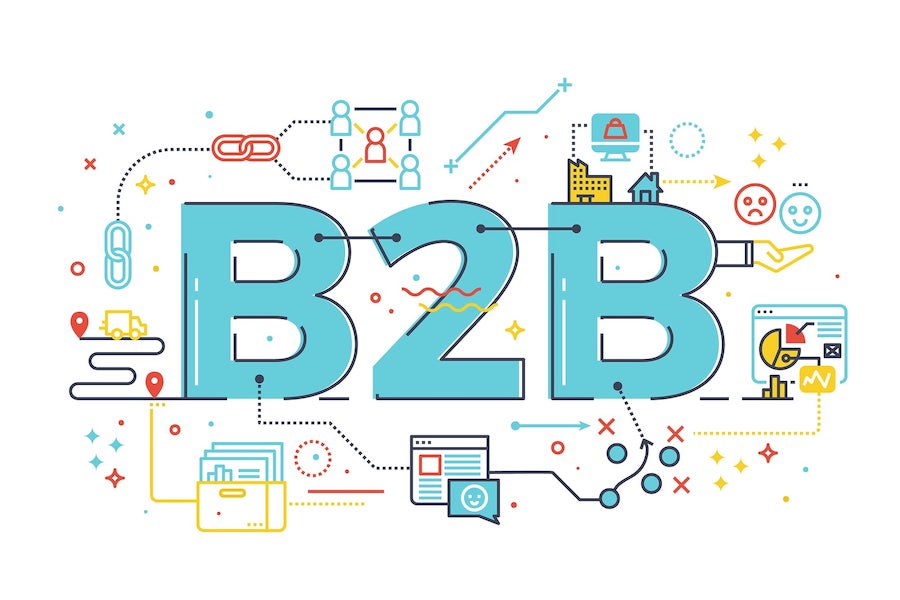The digital marketing strategies used in B2B for the industrial sector are completely different from the strategies used in other industries because the audience is unique. According to the 2018 buyer survey report, 31% of buyers said that their buying cycles are longer when compared to 2017. Of them, 76% of buyers desired content that speaks to their company needs. And 65% of them followed peer recommendations and online reviews. That’s why manufacturers need digital marketing because each touch point is critical.
I will explain it step by step on how to create a digital marketing strategy that you need to apply in order to get relevant traffic and to increase your ROI.
B2B industrial manufacturers digital marketing tips:
Collect important information from the client
It is very important to collect the following information from the client:
- List of products or services that provide higher ROI
- Competitors
- Keywords or topics that they consider relevant
- Target market
- The location where the client can deliver products or services
- New products/services
- Industries they serve
- Complementary services/products
This information will give me a starting point about the topics I need to start mapping out for my keyword research. I focus on the topics- keywords that provide higher ROI to my clients and in the main products or services. Feedback from clients about competitors, keywords, and target market are extremely useful.
I know I have tools to find this information but it is always good to get the insights from the source. Many software provides competitors and keywords based on the website’s content. Furthermore, think for one moment that it is possible that your client is not ranking or does not have the right content yet on his/her website. Then the tool will not provide you the right competitors.
After getting the information above, I do an exhaustive keyword research and competitor analysis with at least three competitors. It is preferred to use tools, such as SEMrush and Ahrefs for these tasks. Having a project in SEMrush and tracking keywords in Ahrefs, provides useful information every month about how my project is doing. It’s easy to create reports and to find the low hanging fruits. I later add these findings to the content strategy.
Learning about my client’s new products/services as well as the industries they service gives an opportunity to plan keyword rich content in the forms of blog posts, infographics, and videos.
In addition to content creation, using industry knowledge about complementary products/services is a powerful backlinking strategy.
For example, my client provides metal stamping services for a variety of different metals. I would create a blog post titled “Choosing the right metal for your metal stamping projects” to live on the client site. And also create a sharable infographic ad that would be perfect for other metal suppliers to share on their websites or social platforms.
On-page SEO is powerful
First, I run a website audit using Screaming Frog. With the results, I can find the bottlenecks which would need improvements through the on-page SEO strategy such as:
- Rewrite short meta descriptions
- Write titles
- Write meta descriptions
- Add keywords in titles
- Shorten long titles
- Add alt tags
- Fix broken links (redirections)
- Add title tags (h2,h3)
It’s never advisable to work on a messy website, so you really need to get this done in the beginning. If the on-page SEO is really off and involves a major project, divide the project into different tasks in order to get it done. I know the power of on-page SEO and I do not want to lose my opportunities here.
Among my practices are rewritten URLs following SEO best practices:
- Short and clear
- Avoiding stop words
- Using on-page keywords
After I have created new URLs I use the 301 redirects.
Example: www.metalstamping.com/blog/the-advantage-of-fourslide-metal-stamping-over-tradicional-power-press-stamping-explained-09_87-5437&5%
www.metalstamping.com/blog/advantage-fourslide-metal-stamping-over-tradicional-power-press-stamping/
I also revamp old content from static pages to add better keywords such as long tail or user intent. A study shows that 50% of queries are four words or longer.
Use long tail keywords to get rankings
Long tail keywords help increase your traffic. The best way to optimize on-page is by using about 50% of long tail keywords. Seventy percent, 70% of searches are long tail keywords. That’s why they are an important part of my SEO strategy. I have a client that offers Metal Stamping services. Metal stamping had 4400 monthly searches and 699 million results. With a high competitive keyword, it’s better to use a long tail keyword such as “what is metal stamping?”. I actually ranked number one on Google SERPs for one of my clients with this keyword, within days and without backlinks. You can check out my case study about it.
Take your time to learn about the industry
While working with several clients at the same time can be overwhelming. It is not easy to become an expert in many different types of businesses within the industrial and manufacturing sector. I have overcome this challenge by taking time to read about the products or services pages of my clients’ websites so that I get a general idea of what they do (this is a challenge because many products are designed and used for engineers). Nevertheless, this is a crucial part because I am in charge of the content strategy. You could even watch a video about the main product or services to reinforce your previous readings and research.
How I do B2B industrial SEO for my clients
There are many opportunities for B2B websites in the industrial sector. Many businesses in this sector have old websites and they do not have a digital marketing strategy. While doing my research for content ideas, I have found out that there is no content available for many keywords regarding topics on industrial, manufacturing, and engineering. The lack of online results opens a huge door of opportunities for industrial businesses. I have taken advantage of the opportunity and created informative content that covers the topic. As a result, I have earned top positions in search results and leads for my clients.
The buyer journey in the B2B industrial market is different from the other industries. Focus on the personas browsing in B2B industrial websites. Most of the time, the people that are gathering the information to find suppliers are engineers, managers, and CEOs. Make sure you are creating content that speaks to them and make good use of their jargon in the content strategy.
Some content ideas that work well are:
- Products technical data
- Case studies
- A process to create a product
- Products applications
- Terms and conditions of purchase
- Policies of purchase
These are important topics the person is looking for which the supplier needs to find in an industrial website.
___
by Karina Tama
source: Search Engine Watch


